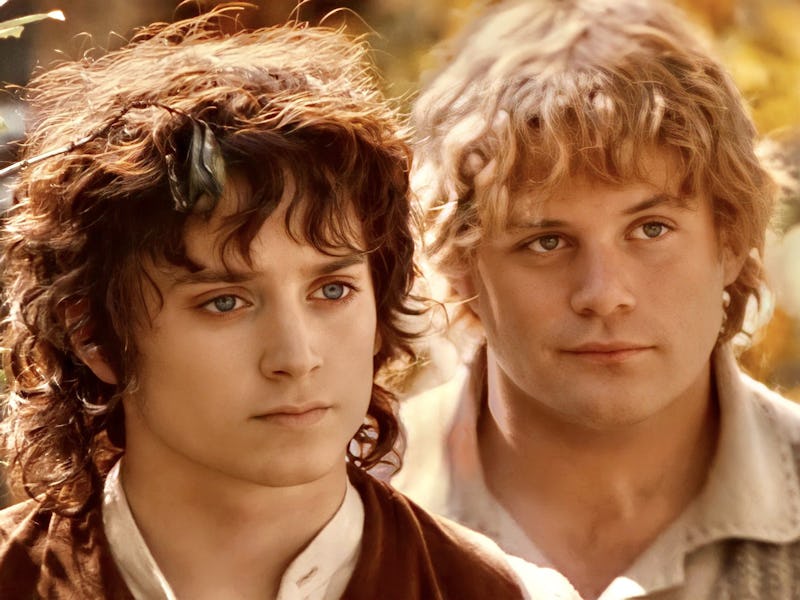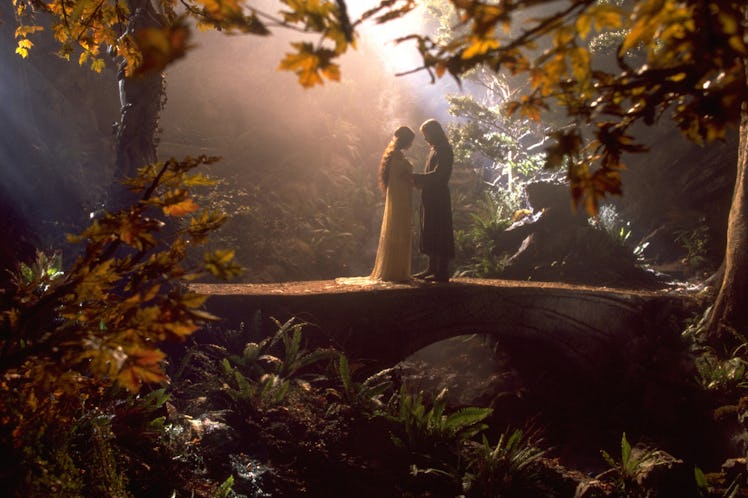
The concept of “brat summer” is ostensibly coming to an end, but that’s just as well for fans of the fall. Autumn is an ideal time for lovers of cozy fantasy, and even for fantasy stories that skew a bit darker. Take J.R.R. Tolkien’s Lord of the Rings trilogy and its fantastic film adaptations by Peter Jackson, which gave us the personification of lush, cozy autumn in its depictions of Rivendell and the Shire. Both realms serve as sanctuaries for Frodo Baggins, offering him respite on his quest to destroy the One Ring, along with an ideal to keep fighting for. But their appeal is also pretty simple for Tolkien fans: not unlike the Harry Potter lovers who dream of walking the streets of Hogsmeade, butterbeer in hand, the average LOTR enjoyer has fantasized about visiting Hobbiton or Rivendell at least once.
Autumn would be the ideal time to visit the latter if it did exist, as Frodo first travels to Rivendell in late October. When the young Hobbit is rescued from a Nazgûl attack in The Fellowship of the Ring, he awakens in the realm after a four-day slumber. The wizard Gandalf explains that he’s “in the House of Elrond, and it is ten o’clock in the morning … the morning of October the 24th, if you want to know.”
Jackson would include this exchange almost verbatim in his own adaptation of Fellowship, and likely for good reason. It’s a bit funny to think that the free peoples of Middle-earth would actually use the Gregorian calendar, marking time the same way we do in the real world. Tolkien worked so hard on every other aspect of his fantasy world, crafting entire languages and cultures — why wouldn’t he do the same with the calendars?

Tolkien had his own calendar for Middle-earth, but translating that for audiences was easier said than done.
New Line Cinema
In truth, Tolkien actually did put as much work into the calendars of Middle-earth as he did with the cultures of Elves, Men, and Hobbits. Each race had its own ways of recording time: the immortal Elves marked time by centuries, while the Men of Númenor used a method that skewed closely to the Gregorian calendar, as did the Hobbits (in a calendar referred to as Shire-reckoning). The latter divided the year into 12 months, but their names and lengths diverged a bit from our own.
October in Middle-earth was actually known as “Winterfilth,” but because the Lord of the Rings is presented as an ancient text translated by Tolkien himself, some terms are translated directly into English. When Gandalf brings Frodo back up to speed in Fellowship, he’s not actually saying it’s the month of October: Tolkien just calls it that for the audience’s convenience.
In Tolkien’s Appendix D, he writes: “I have used our modern names for both months and weekdays, though of course neither the Eldar nor the Dunedain nor the Hobbits actually did so. Translation of the Westron names seemed to be essential to avoid confusion, while the seasonal implications of our names are more or less the same, at any rate in the Shire.”
It’s an interesting, if meta, way to present an alternate reality, especially since the truth behind Tolkien’s method isn’t as well known. Still, it doesn’t take away the warm fuzzy feelings that particular scene gives us. October the 24th will always represent a special day for Tolkien fans; since we can’t really travel to Rivendell, at least we can celebrate Frodo’s first trip to the house of Elrond.



